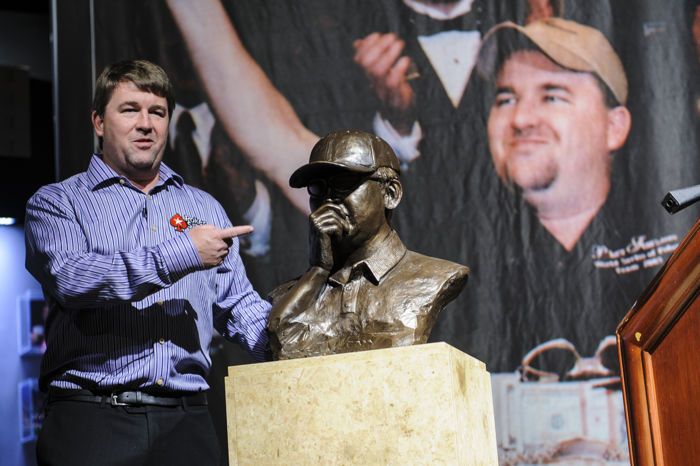Analyzing Moneymaker's 'Bluff of the Century' Against Farha

The Chip Race is back with another strategy video. This time co-hosts David Lappin and Dara O'Kearney have been joined by Daiva Byrne to discuss one of the most iconic hands in World Series of Poker history �� the one from late in the 2003 WSOP Main Event where Chris Moneymaker successfully pulled off the "Bluff of the Century" while heads-up versus Sammy Farha.
As we notice sometimes when going back to review old episodes of High Stakes Poker or other poker TV from the past, some of the decisions in these older hands can appear unorthodox in retrospect given the way strategy has evolved. That's kind of a theme in the trio's latterday analysis of this famous hand.
The Hand
Most of us likely remember the hand though perhaps don't recall the specific situation. At the 20,000/40,000/5,000 level, Moneymaker had the chip advantage with 4.6 million to Farha's 3.7 million to begin.
On the button with K?7?, Moneymaker raised to 100,000 and Farha called with Q?9?. The flop came 9?2?6?, and both players checked �� all fairly straightforward, comments O'Kearney.
"On the flop, Farha flops top pair but he has the... more condensed range, so he really shouldn't be leading, so he checks. I think that's perfectly standard," says O'Kearney. Moneymaker meanwhile could check or bet here, he adds, with checking being fine since he doesn't always hit a low board like this one (among other reasons).
Lappin and Byrne then talk a little about the larger situation and how Farha's experience edge might have affected his approach, such as here where he takes a passive line initially and seems interested in keeping the pot small.

After the 8? turn, Farha leads with a big bet �� 300,000 into the 210,000 pot �� and Moneymaker actually raises to 800,000 and Farha calls. This is where the play diverges quite a bit from what we might expect to see today, although the discussion reveals a few possible justifications for both players' aggressive play on this street.
The 3? river meant Moneymaker missed both his straight and flush draws, and while Farha had the best hand with his pair of nines, he very reasonably checked given the precariousness of the situation. That's when Moneymaker made his big bluff-shove, and as we know Farha chose to let his hand go.
As O'Kearney explains, even if players weren't necessarily thinking specifically about ranges and bluff catching back then, Moneymaker's all-in pretty clearly telegraphs a "polarized" range �� i.e., he has a straight or better, or nothing at all.
"I don't think he should even be shoving two pairs or sets on this board," notes O'Kearney, which means Farha's one-pair hand has been reduced to a bluff catcher.
They discuss at length Farha's decision and stories about how long he apparently tanked before folding, and for fun also perform a "solver" analysis on the hand (and how greatly that approach might have changed the way it was played).
Watch and Listen
Take a look below to relive this exciting and historically important hand and hear the entire analysis:
The Chip Race is a weekly podcast sponsored by Unibet Poker, and can be heard on iTunes and anywhere else you listen to podcasts. Follow David Lappin on Twitter @dklappin, Dara O'Kearney @daraokearney, and Daiva Byrne @baltic_blonde









